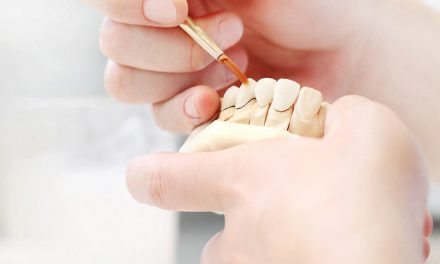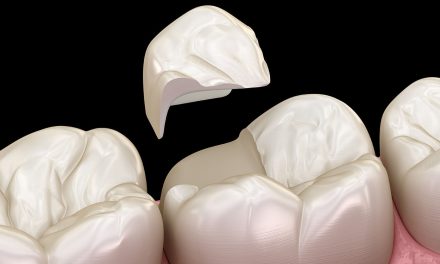A person’s bite is more complicated than you might think. The chewing surfaces of the natural teeth need to mesh precisely, so even the smallest misalignment can affect the proper interactive function of the teeth. This can also seriously affect the function of the muscles of the temporomandibular joints.
If a denture is made, it is crucial that the natural bite position is precisely duplicated. We at NextSmile will provide you with precise information on the steps involved in making complex dentures with a vertical dimension increase. This is also known as a rehabilitation of the vertical dimension.
Dentures must be perfectly adapted to the patient’s individual bite position and the temporomandibular joints play a decisive role here. But what if the bite position of the natural teeth has changed during the course the patient’s life and a lowered bite position has developed? How can a denture restore the correct physiological conditions with which the patient feels most comfortable?
A lowered bite position, as it is commonly known, or loss of vertical dimension, to use a more technical term.
A loss of vertical dimension can be caused by non-carious defects. These can, for example, be erosions or attritions caused by acidic foods, or by teeth grinding. Dentists have been watching this growing phenomenon for years. The treatment team will decide on a suitable therapy to restore the elevation of the patient’s correct bite. A structured approach is needed to tie in with an overall suitable concept.
In this regard questions arise as to which materials are best to ensure long-term stable dentures – composite, ceramic or gold? This decision is important, but the overall success of therapy depends primarily on knowing what caused the defect and what the functional
circumstances are.
Damage to the teeth must be identified and treated. However, before the treatment, the dentist must decide which is the right time for the new denture to be taken into use. If it is necessary to raise the bite, pre-treatment will first be necessary to establish and evaluate the height of the corrected bite position.
Vertical Dimension Increase: Aligner Therapy
Making a diagnosis include establishing the photographic status, a situational model and a functional analysis of the bite. In the resting position, the interocclusal distance, or bite height, is determined. To determine a patient’s healthy physiological bite, it is recommended that the patient wears an occlusal aligner. This should be worn daily for 24 hours, after which the reversible stabilisation of the patient’s bite can begin.
This is a reconstruction of the vertical dimension, or a build-up of the bite height. An impression with the aligner is used to set the model in an articulator which simulates the function of the temporomandibular joint.
The dentist registers the patient’s new bite position using a so-called Aqualizer. The Aqualizer is a pre-made aligner, made of a nylon film, that is filled with water. The goal is the relaxation and deprogramming of the chewing muscles. When wearing the Aqualizer, the lower jaw finds itself bilaterally supported, and this ‘relaxed’ jaw position is recorded in the bite registration.
Creation of a mock-up or template, and the dentures
After the models have been articulated, a wax-up is made of the ideal physiological bite position. Temporary composite crowns are made in the patient’s mouth using moulded parts and the aesthetic impacts and how the patient’s speech is affected, are evaluated. If everything is set up perfectly, the individual dentures can be manufactured based on this template.
Ceramic materials are ideal for these chewing surfaces. High-strength glass ceramic combines the necessary strength with a very good visual appearance. Wafer-thin but very stable restorations can be created that will integrate harmoniously into the patient’s mouth while also ensuring excellent function.
Summary: Vertical Dimension Increase
The successful reconstruction after the patient has experienced loss of vertical dimension is a challenge that the experienced team of dentist and dental technician master together. With the use of splint therapy, the newly established bite height is safely converted into a successful restoration of the patient’s natural bite and teeth. The result is a satisfied patient who can chew, laugh and speak naturally again.





